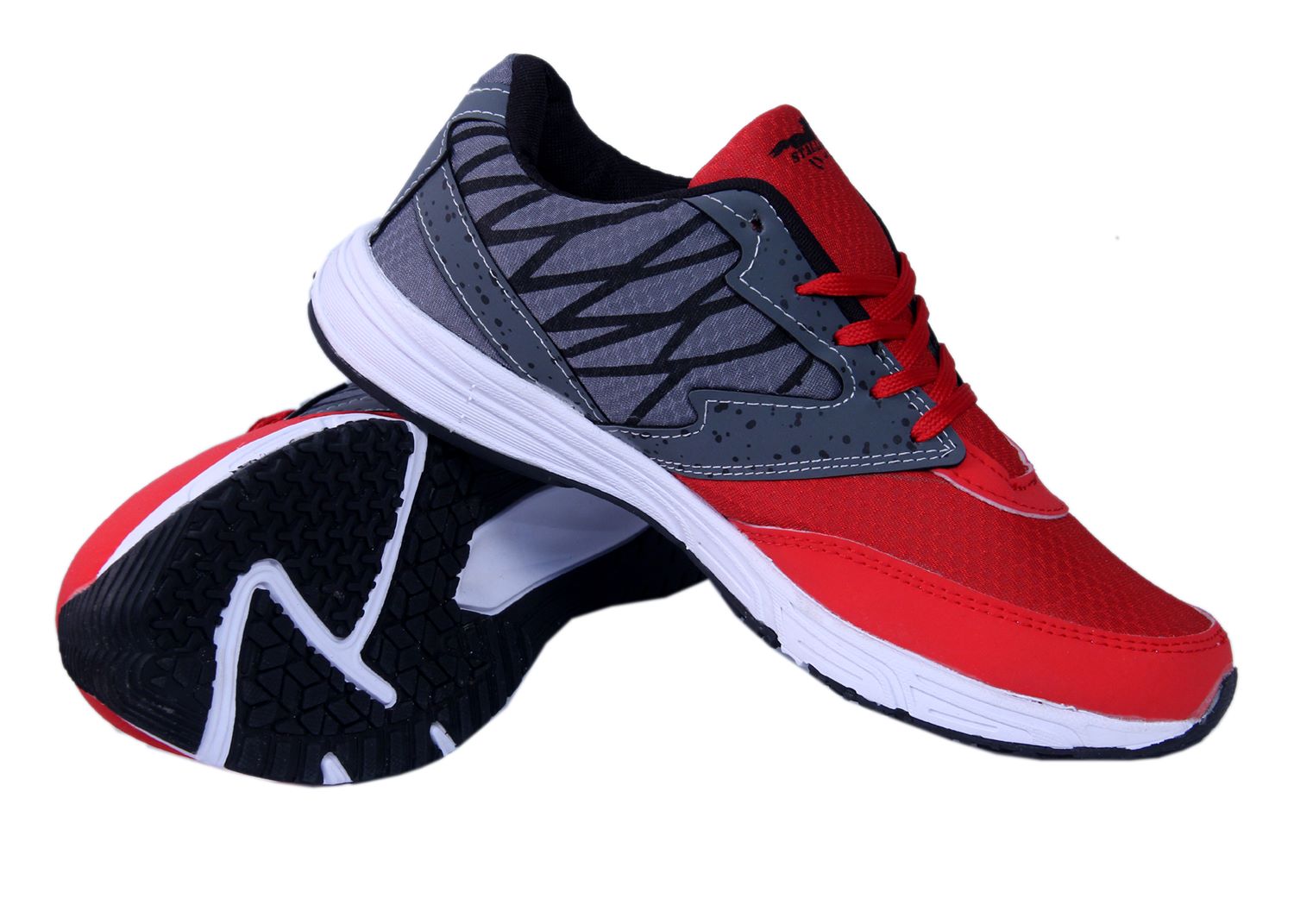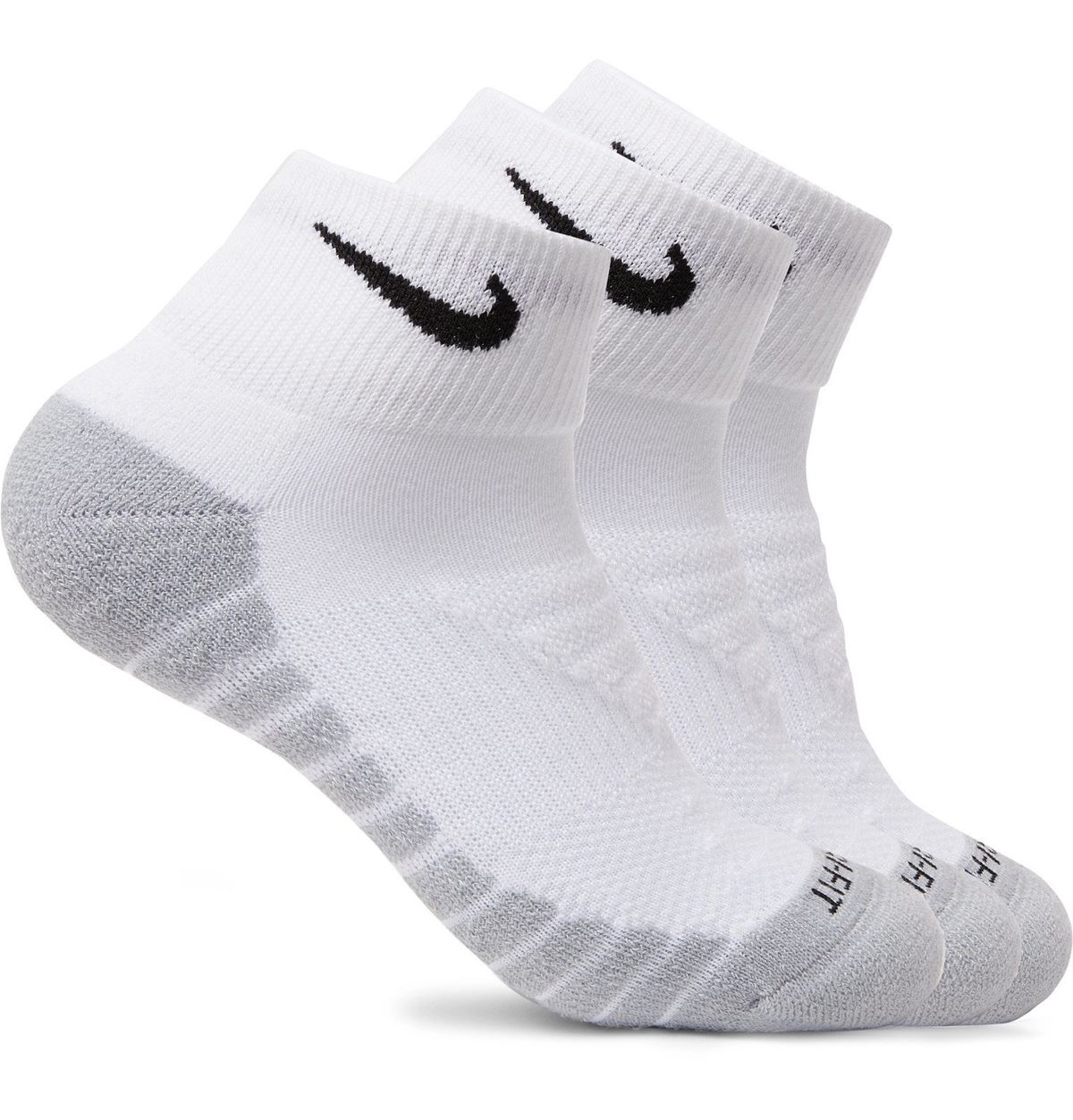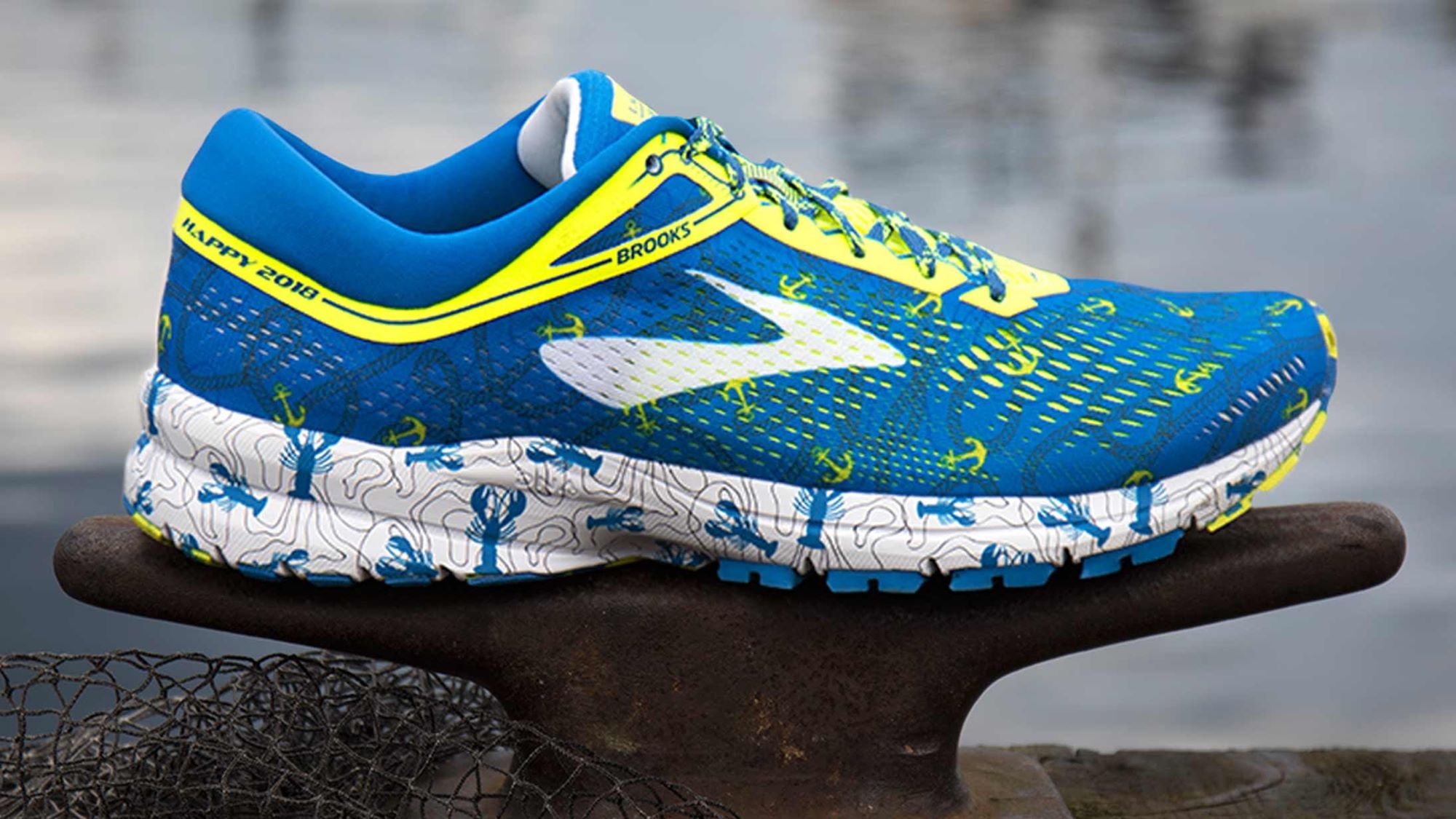

Featured
Why Does My Ankle Hurt When Jogging
Modified: October 24, 2023
Discover the reasons behind your ankle pain while jogging and learn how to relieve it. Our featured tips will help you enjoy pain-free runs.
Introduction
Have you ever experienced pain in your ankle while jogging? You’re not alone. Ankle pain is a common issue that many joggers face, and it can be a source of frustration and hinder your running routine. In this article, we will explore the causes of ankle pain while jogging, common injuries and conditions that may contribute to the discomfort, and effective prevention and self-care tips to help you get back on track.
Running is a fantastic form of exercise that not only improves cardiovascular health but also boosts mood and strengthens muscles. However, the repetitive impact on the ankles can sometimes lead to pain and discomfort, causing you to doubt the benefits of this beloved activity. Understanding the underlying causes of ankle pain while jogging is crucial in order to address the issue effectively.
Ankle pain can have various triggers, ranging from acute injuries and overuse to underlying medical conditions. It is important to identify the root cause of your ankle pain to determine the appropriate treatment and prevent further damage.
This article will provide insights into the most common injuries and conditions associated with ankle pain while jogging, as well as practical tips on how to prevent such injuries and care for your ankles. Additionally, we will discuss when it is necessary to seek medical attention and the diagnostic process involved in identifying the cause of your ankle pain. Finally, we will explore the various treatment options available and discuss rehabilitation exercises that can help strengthen your ankle and prevent future injuries.
Jogging should be a pleasurable and rewarding experience, and ankle pain should not hold you back from enjoying the benefits of this wonderful activity. By understanding the causes and implementing effective preventive measures, you can continue to pursue your jogging goals without the discomfort and frustration of ankle pain. So, let’s dive in and uncover the secrets to overcoming ankle pain while jogging!
Understanding Ankle Pain
Ankle pain can be a perplexing and frustrating issue, especially when it occurs during activities like jogging. To effectively address ankle pain while jogging, it is essential to have a basic understanding of how the ankle joint works and the potential causes of discomfort.
The ankle is a complex joint that connects the lower leg bones, known as the tibia and fibula, to the foot bones. It is made up of several ligaments, tendons, and muscles that work together to provide stability and support during movement. When any of these structures become injured or strained, it can result in ankle pain and limitations in mobility.
One of the primary functions of the ankle is to absorb impact and provide propulsion during activities such as jogging. As the foot hits the ground, the ankle joints work to distribute the forces throughout the leg, minimizing the impact on the joints and bones. However, repetitive stress or trauma can disrupt this process and lead to pain and discomfort.
Ankle pain while jogging can be caused by various factors, including acute injuries, chronic overuse, structural abnormalities, and medical conditions. Acute injuries, such as ankle sprains or fractures, are often the result of sudden trauma or twisting motions. These injuries can cause immediate pain and swelling, and if left untreated, they may lead to chronic ankle instability.
Chronic overuse is another common cause of ankle pain while jogging. Activities that involve repetitive impact, like running or jumping, can strain the ligaments and tendons surrounding the ankle joint. Over time, this can result in inflammation, discomfort, and decreased range of motion.
Structural abnormalities, such as high arches, flat feet, or biomechanical imbalances, can also contribute to ankle pain while jogging. These conditions can place excessive stress on the ankle joint and lead to pain and discomfort.
Additionally, certain medical conditions, such as arthritis, tendonitis, or nerve impingements, can cause ankle pain during physical activities like jogging. These conditions may require specialized treatment and management to alleviate symptoms and prevent further damage.
By understanding the causes and mechanisms behind ankle pain while jogging, you can take the necessary steps to address the issue effectively. In the following sections, we will explore the specific injuries and conditions that can contribute to ankle pain during jogging, as well as practical tips to prevent and manage these symptoms.
Causes of Ankle Pain while Jogging
When you experience ankle pain while jogging, it is crucial to identify the underlying causes in order to effectively address the issue. There are several factors that can contribute to ankle pain during jogging, including:
- Ankle Sprains: One of the most common causes of ankle pain while jogging is an ankle sprain. This occurs when the ligaments that surround the ankle are stretched or torn, often as a result of sudden twists or falls. Ankle sprains can cause pain, swelling, and instability, making it difficult to continue jogging.
- Fractures: Jogging puts repeated stress on the bones of the foot and ankle. In some cases, this repetitive stress can lead to stress fractures, which are small cracks in the bone. Stress fractures can cause significant pain during jogging and may require rest and proper treatment to heal.
- Tendinitis: Tendons are the fibrous tissues that connect muscles to bones. Overuse of the ankle joint during jogging can cause inflammation of the tendons, a condition known as tendinitis. This can result in pain, swelling, and difficulty with movement.
- Plantar Fasciitis: Jogging can also contribute to the development of plantar fasciitis, which is inflammation of the band of tissue that connects the heel bone to the toes. This condition can cause sharp, stabbing pain in the heel or arch of the foot, making jogging uncomfortable.
- Arthritis: Arthritis is a chronic condition characterized by inflammation in the joints. Jogging can exacerbate symptoms in individuals with arthritis in the ankle joint, leading to pain and stiffness during exercise.
- Biomechanical Issues: Certain biomechanical issues, such as flat feet or high arches, can increase the risk of ankle pain while jogging. These structural abnormalities can place excessive stress on the ankle joint, leading to discomfort and potential injuries.
It is important to note that these causes are not exhaustive, and there can be other factors contributing to ankle pain while jogging. Consulting with a healthcare professional can help pinpoint the specific cause of your ankle pain and guide you towards the most appropriate treatment plan.
In the next section, we will explore some common injuries and conditions that can contribute to ankle pain while jogging, providing further insights into how to address and prevent these issues.
Common Injuries and Conditions
Ankle pain while jogging can be caused by a variety of injuries and conditions. Understanding these common issues can help you identify the source of your discomfort and take appropriate measures for prevention and treatment. Here are some of the most prevalent injuries and conditions associated with ankle pain while jogging:
- Ankle Sprains: An ankle sprain occurs when the ligaments that support the ankle are stretched or torn. It is a common injury among joggers, often resulting from sudden twists, turns, or landing on an uneven surface. Ankle sprains can cause pain, swelling, bruising, and difficulty bearing weight.
- Achilles Tendinitis: The Achilles tendon connects the calf muscles to the back of the heel. Overuse or excessive strain can lead to inflammation and irritation of the tendon, known as Achilles tendinitis. This condition can cause pain and stiffness in the back of the ankle, making jogging uncomfortable.
- Stress Fractures: Stress fractures are small cracks in the bones, typically caused by repetitive stress and overuse. Jogging can subject the bones of the foot and ankle to repeated impact, increasing the risk of stress fractures. Common sites of stress fractures include the metatarsal bones and the tibia.
- Plantar Fasciitis: The plantar fascia is a band of tissue that supports the arch of the foot. Overloading this band, through activities like jogging, can lead to inflammation and pain in the heel or arch, known as plantar fasciitis. The pain is often worse in the morning or after long periods of rest.
- Tarsal Tunnel Syndrome: Tarsal tunnel syndrome is a condition where the tibial nerve gets compressed or pinched as it passes through a narrow tunnel on the inside of the ankle. This can cause pain, tingling, and numbness in the ankle and foot, which can worsen during activities like jogging.
- Arthritis: Arthritis is a chronic condition that causes inflammation and pain in the joints. Ankle arthritis can result from wear and tear, injury, or underlying conditions like rheumatoid arthritis. It can lead to pain, stiffness, swelling, and limited range of motion.
It is crucial to seek an accurate diagnosis from a healthcare professional to determine the specific injury or condition causing your ankle pain. Proper diagnosis will enable you to receive appropriate treatment and develop an effective rehabilitation plan.
In the following sections, we will explore practical tips for preventing ankle pain while jogging and self-care techniques to relieve discomfort and aid in the healing process.
Prevention and Self-Care Tips
Preventing ankle pain while jogging is key to maintaining a healthy and enjoyable running routine. By implementing these preventive measures and self-care tips, you can reduce the risk of injury and manage any existing discomfort:
- Proper Warm-up: Before starting your jogging session, warm up your muscles and joints with dynamic exercises like leg swings and ankle circles. This helps increase blood flow and flexibility, reducing the risk of strains and sprains.
- Choose the Right Footwear: Invest in a pair of running shoes that provide adequate support, cushioning, and stability for your feet and ankles. Replace them regularly to ensure optimal shock absorption and prevent worn-out soles.
- Gradual Progression: Increase your jogging duration and intensity gradually over time to allow your body to adapt and strengthen. Sudden increases in distance or speed can put excessive strain on your ankles and lead to injuries.
- Strengthen Your Ankles: Perform exercises that target the muscles and ligaments around the ankle joint. This includes calf raises, ankle rotations, and balance exercises. Strengthening these muscles can improve stability and reduce the risk of ankle sprains.
- Avoid Uneven Surfaces: Stick to well-maintained surfaces when jogging to minimize the risk of tripping or twisting your ankle. Avoid running on uneven terrain, gravel, or icy paths whenever possible.
- Use RICE Method: If you experience any ankle pain or swelling, remember the acronym RICE: Rest, Ice, Compression, and Elevation. Give your ankle sufficient rest, apply ice packs, wrap the area with a compression bandage, and elevate your foot above heart level to reduce inflammation and promote healing.
- Cross-Train: Include cross-training activities in your fitness routine to reduce the repetitive impact on your ankles. Activities like swimming, cycling, or strength training can help improve overall fitness while giving your ankles a break.
- Listen to Your Body: Pay attention to any warning signs of pain or discomfort in your ankles. If you feel persistent or worsening pain, reduce your activity level or take a break to allow your ankles to recover.
- Maintain a Healthy Weight: Excess weight places additional stress on your joints, including your ankles. By maintaining a healthy weight, you can lessen the strain on your ankles while jogging and reduce the risk of injuries.
These preventive measures and self-care tips can greatly help in reducing the risk of ankle pain while jogging and promote the overall health and well-being of your ankles. However, if your ankle pain persists or worsens despite these measures, it is important to seek medical attention for a proper diagnosis and treatment plan.
In the next sections, we will discuss when it is necessary to seek medical attention and the diagnostic process involved in identifying the cause of your ankle pain.
When to Seek Medical Attention
While many cases of ankle pain while jogging can be managed with self-care techniques, there are instances when it is necessary to seek medical attention. It is important to listen to your body and consult a healthcare professional if you experience any of the following:
- Severe Pain: If you are experiencing severe or unbearable pain in your ankle while jogging or at rest, it may be a sign of a more serious injury or condition.
- Inability to Walk: If your ankle pain is so severe that you are unable to bear weight on the affected leg or cannot walk, it is important to seek immediate medical attention.
- Noticeable Deformity: If your ankle appears visibly deformed, swollen, or misaligned after an injury, it could indicate a fracture or dislocation that requires urgent medical attention.
- Chronic or Recurring Pain: If you have been experiencing persistent or recurring ankle pain while jogging, it may signify an underlying condition that needs to be assessed and treated by a healthcare professional.
- Restricted Range of Motion: If you are experiencing limited movement or stiffness in your ankle joint that is affecting your ability to jog or perform daily activities, it is recommended to seek medical evaluation.
- Signs of Infection: If you notice signs of infection such as increasing redness, warmth, swelling, or drainage from your ankle, it is important to seek prompt medical attention.
- Previous History of Ankle Injuries: If you have a history of recurring ankle injuries or chronic ankle instability, it is advisable to consult a healthcare professional for proper evaluation, treatment, and prevention strategies.
Remember, it is always better to err on the side of caution when it comes to your health and well-being. Seeking medical attention in a timely manner can help prevent further damage, optimize your recovery, and provide you with the appropriate guidance for returning to jogging safely.
In the following section, we will explore the diagnostic process involved in identifying the cause of your ankle pain and the various treatment options available.
Diagnosing Ankle Pain
When experiencing ankle pain while jogging, obtaining an accurate diagnosis is essential for appropriate treatment and management. Diagnosing the cause of your ankle pain involves a thorough evaluation of your symptoms, medical history, and physical examination. Here are the common diagnostic methods used to identify the source of ankle pain:
- Medical History: Your healthcare provider will inquire about your medical history, including previous ankle injuries, chronic conditions, and any activities or factors that may have contributed to your ankle pain.
- Physical Examination: A physical examination of the ankle will be performed to assess for signs of swelling, tenderness, instability, range of motion, and any visible deformities. The healthcare provider may also perform specific tests to evaluate the strength and integrity of the ankle structures.
- Imaging Tests: Imaging tests such as X-rays, MRIs, or CT scans may be ordered to obtain detailed images of the bones, joints, ligaments, and tendons. These tests can help identify fractures, bone abnormalities, ligament tears, or other structural issues.
- Diagnostic Injections: In certain cases, diagnostic injections may be performed to help pinpoint the source of ankle pain. An injection of a local anesthetic or corticosteroid into specific areas of the ankle can provide temporary pain relief and aid in establishing a diagnosis.
- Additional Tests: Depending on the suspected cause of ankle pain, additional tests such as blood tests or nerve conduction studies may be ordered to rule out underlying systemic conditions or nerve-related issues.
By combining the information gathered from your medical history, physical examination, and diagnostic tests, your healthcare provider will be able to determine the cause of your ankle pain and develop an appropriate treatment plan tailored to your specific needs.
It is important to be open and honest with your healthcare provider, providing accurate information about your symptoms, recent activities, and any changes you have noticed in your ankle. This will assist in the accurate diagnosis of your condition.
In the next section, we will explore the different treatment options available for ankle pain while jogging and discuss the importance of rehabilitation and exercises in the recovery process.
Treatment Options
When it comes to treating ankle pain while jogging, the approach can vary depending on the underlying cause and severity of the condition. Here are some common treatment options that healthcare professionals may recommend:
- Rest and Immobilization: Resting the affected ankle and immobilizing it with a brace or cast can help promote healing and prevent further damage, especially in cases of acute injuries or significant pain.
- Pain Management: Over-the-counter pain medications, such as nonsteroidal anti-inflammatory drugs (NSAIDs), can help manage pain and reduce inflammation in the ankle. Your healthcare provider may also prescribe stronger pain medications if necessary.
- Physical Therapy: Physical therapy plays a vital role in treating ankle pain by improving strength, flexibility, and stability. A physical therapist can guide you through exercises and techniques to promote healing, restore mobility, and prevent future injuries.
- Bracing and Orthotics: Depending on the underlying cause of your ankle pain, your healthcare provider may recommend using ankle braces or orthotic devices to provide support, stability, and alleviate symptoms.
- Injections: In some cases, injections of corticosteroids or other medications may be considered to reduce inflammation and provide pain relief. These injections are typically performed under the guidance of ultrasound or other imaging techniques.
- Surgery: In severe cases or when conservative treatments fail to alleviate ankle pain, surgery may be recommended. Surgical options can range from repairing damaged ligaments or tendons to joint reconstruction or ankle fusion.
- Alternative Therapies: Some individuals find relief from ankle pain through alternative therapies such as acupuncture, chiropractic care, or massage therapy. These therapies may be used in conjunction with conventional treatments, but it is important to consult with a healthcare professional before pursuing them.
The choice of treatment will depend on various factors such as the cause of the ankle pain, the severity of the condition, your overall health, and your goals for recovery. It is crucial to follow the recommendations of your healthcare provider and actively participate in your treatment plan to achieve the best possible outcomes.
In the next section, we will explore the importance of rehabilitation and exercises in the recovery process and discuss how they can help strengthen your ankle and prevent future injuries.
Rehabilitation and Exercises
Rehabilitation and exercises play a crucial role in the recovery process from ankle pain while jogging. They help strengthen the muscles, improve flexibility, restore stability, and prevent future injuries. Here are some essential components of ankle rehabilitation and exercises:
- Range of Motion Exercises: Gentle range of motion exercises, including ankle circles and alphabet exercises, help improve flexibility and restore normal joint movement.
- Strength Training: Strengthening exercises target the muscles surrounding the ankle joint, such as the calf muscles and the muscles on the sides of the lower leg. Examples include calf raises, ankle dorsiflexion exercises, and resistance band exercises.
- Balance and Proprioception Training: Exercises that improve balance and proprioception help enhance stability and reduce the risk of re-injury. Examples include single-leg balance exercises, balance board exercises, and wobble board exercises.
- Coordination Drills: Coordination drills focus on improving the coordination and control of movements related to running and jogging. These exercises help train the muscles and joints to work together efficiently.
- Functional Training: Functional training involves exercises that simulate the movements and demands of jogging. This may include agility drills, lateral movements, and movements that mimic the jogging stride.
- Gradual Return to Jogging: When your ankle has sufficiently healed and you have regained strength and range of motion, your healthcare provider may guide you through a structured program to gradually reintroduce jogging into your routine. This gradual return helps ensure a safe and successful transition back to running.
- Maintaining Fitness: It is important to continue engaging in activities that maintain overall fitness while allowing your ankle to recover. This may include low-impact exercises like swimming, cycling, or using an elliptical machine.
Working with a physical therapist or an experienced sports rehabilitation professional can be highly beneficial in guiding you through the appropriate exercises and ensuring proper form and progression. They can help tailor a rehabilitation program specifically to your needs and goals.
Consistency and patience are key in rehabilitation and exercises. It’s important to gradually progress the intensity and duration of exercises to avoid overloading the ankle and risking further injury. Follow the guidance of your healthcare provider and listen to your body throughout the rehabilitation process.
Incorporating regular strength and conditioning exercises into your routine even after recovering from ankle pain can help maintain the health and stability of your ankles, reducing the risk of future injuries.
Now that we’ve explored the importance of rehabilitation and exercises in ankle pain recovery, let’s conclude with some final thoughts.
Conclusion
Ankle pain while jogging can be a frustrating setback, but with proper understanding, prevention, and treatment, you can overcome this obstacle and get back to enjoying your running routine. By recognizing the causes of ankle pain while jogging, such as ankle sprains, tendinitis, and structural abnormalities, you can take proactive steps to prevent these injuries. Implementing warm-up exercises, using appropriate footwear, and gradually increasing intensity are crucial for maintaining ankle health.
In the event that ankle pain does occur, knowing when to seek medical attention is essential. Severe pain, inability to walk, and chronic or recurring pain are red flags that warrant professional evaluation. Through medical history, physical examinations, and imaging tests, healthcare providers can accurately diagnose the cause of ankle pain and recommend appropriate treatment options.
Treatment options vary depending on the specific injury or condition, ranging from rest and immobilization to physical therapy, pain management, and, in severe cases, surgery. Rehabilitation and exercises are crucial components of the recovery process, strengthening the muscles, improving range of motion, and restoring stability. By following the guidance of healthcare professionals and engaging in a tailored rehabilitation program, you can recover effectively and reduce the risk of future ankle injuries.
Remember, the journey to overcoming ankle pain while jogging requires patience and consistency. Listening to your body, incorporating preventive measures, and maintaining overall fitness will contribute to long-term ankle health and running success.
So don’t let ankle pain hold you back. Take proper care of your ankles, seek appropriate treatment when needed, and embark on your jogging adventures with confidence and comfort!









